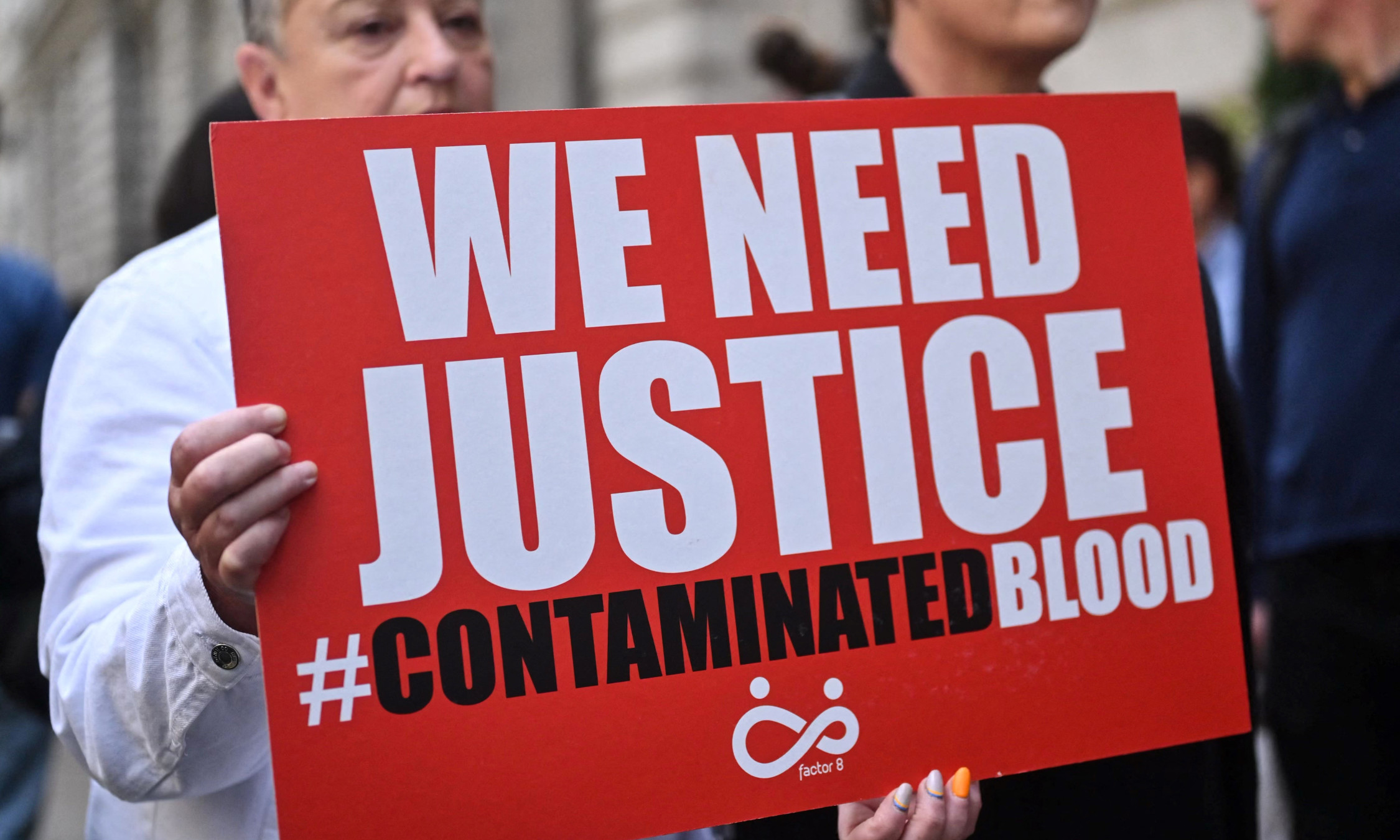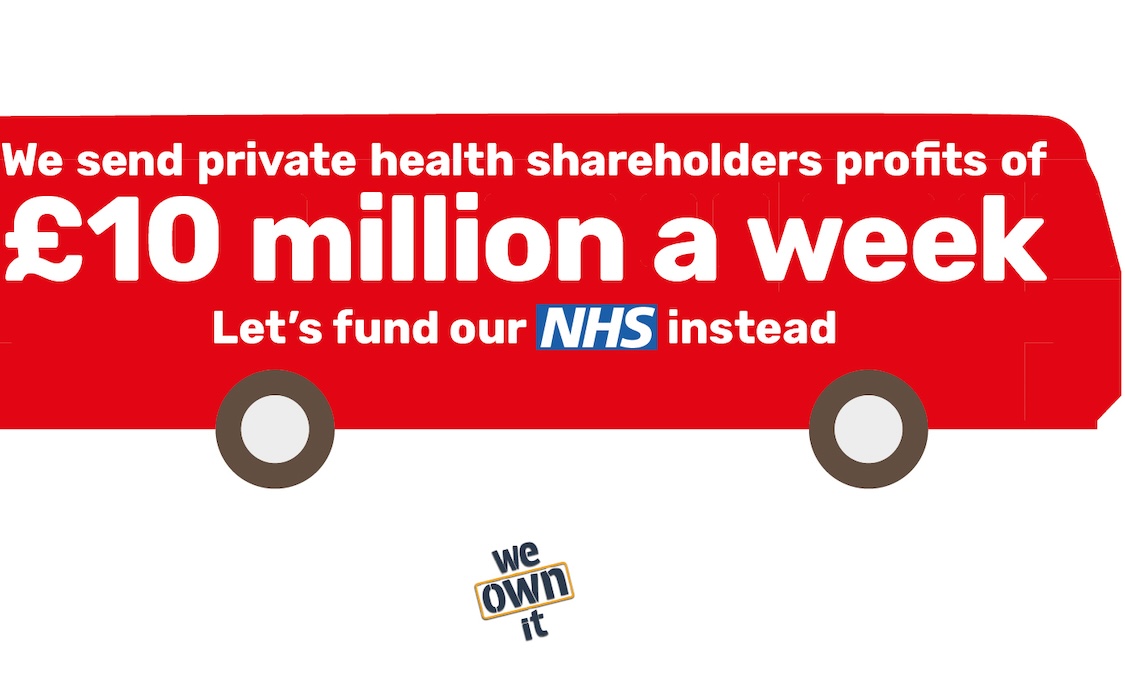While Chancellor Kwasi Kwarteng unveiled his massive tax cuts for the rich, Thérèse Coffey, Britain’s fourth health secretary in a year, unveiled her ‘Plan for patients’, allegedly intended to save the NHS, and make everything wonderful in the world of British healthcare.
Of course, no one with an ounce of intelligence will believe either minister is acting for the benefit of the majority – or that Labour, given the chance, would perform any better. But for the sake of trying to understand the government’s proposals, let’s take a look at the current state of the NHS from the patient’s point of view.
Health service in crisis
The first thing to note is that there are more than six million of us on waiting lists at the present moment, and that number only looks set to grow.
Nearly 380,000 people have waited for over a year, while 2,800 have been stuck in the ever expanding backlog for at least two years.
Some 30 percent of attendees at A&E wait longer than four hours to be treated, while around a thousand patients every day have to wait longer than 12 hours.
Results from August tell us that the average ‘category one’ (calls from people with life-threatening illnesses or injuries) response time was 9mins 8s, although the current target time is 7min. Response times for ‘category two’ calls (burns, epilepsy, strokes etc) have a target of 18min, but were taking, on average, 42mins 44s. The response time for ‘category three’ calls (late stages of labour, non-severe burns, diabetes etc), which should be answered in under two hours were averaging 2h, 16min 23s.
Apart from a shortage of paramedics in ambulances, the biggest block to their job is the A&E departments themselves, which are not sufficiently staffed to cope with the daily influx of patients. This is combined with a lack of ability to move on those patients who need further care after their emergency treatment has been completed (hospital beds on overfull wards, further tests and investigations from other hospital departments, attention from social services or a mental health professional, etc).
As a result, ambulances end up parked by the doors of A&E for hours, with paramedics unable to transfer their patients – and unable also to respond to the next call.
A further cause of blockage in A&E departments is the chronic lack of GPs and mental health services for people to access instead of heading to A&E. Over two million of us are right now waiting to see a local GP.
Meanwhile, there are 60,000 NHS vacancies across the country at this moment. This is probably the single biggest cause of care delivery dysfunction in Britain’s public health service.
Yes, the NHS needs more funding for frontline services. Yes, it needs more hospitals with more beds and more A&E capacity, Yes we need to stop the private sector, chemists and the huge multinational drug manufacturers from bleeding our health budgets dry.
But first and foremost we need paramedics, doctors, nurses, cleaners, etc – and for the efforts of those staff to be subject to a centralised plan focused on real care delivery!
Record levels of staff vacancy left unaddressed by Coffey’s empty ‘plan’
Dr Farah Jameel, chair of the BMA’s GP committee for England, said recently: “Despite delivering over a million appointments a day with the lowest number of GPs we have ever recorded, we continue to struggle to deliver the care we know our patients so desperately need. GPs and their teams are already doing everything they possibly can to see those patients with the most need urgently. Despite this, we know there are so many more patients who cannot access their GPs in a timely fashion.”
He added: “Today’s GP workforce data shows that between August 2021 and August 2022 we lost the equivalent of 314 full-time GPs. We now have the equivalent of 1,850 fewer fully qualified full-time GPs than we did in 2015, with 16 percent more patients per GP. We are losing more GPs than we can recruit, and this combined with cost of living pressures is starting to spell the end of GP practices as we know them.”
Across the health service, the story is the same – shrinking pay, worsening conditions, impossible stresses, and a depressing inability to give patients the care they really need are leading more and more health professional to quit their jobs in despair.
So, in the face of all this, what have our new prime minister and health secretary got planned? Ms Coffey pledges to offer “easier access to the NHS and social care this winter and next”. Her ‘plan’ promises to address priorities that the Department of Health and Social Care (DHSC) says are “most important” to patients, including “ambulances, backlogs, care and doctors and dentists”.
That all sounds perfectly reasonable, but how will it actually be done?
We are told that there will be “common sense” changes, delivering “tangible benefits” for patients, and that this means removing the barriers that get in the way of patient care, putting more information at the fingertips of patients and freeing up the time of clinicians to do what they do best: caring for patients.
Again, this sounds great, but how will it actually be done?
In the end, without regurgitating the whole sorry report, what the plan amounts to is a new set of targets, higher than the ones the NHS is already not reaching, alongside (and one can imagine the vacuous grin of triumph across Liz’s face as this one was announced) … a new ‘cloud-based’ phone system!
Back on Planet Earth, Dr Farah Jameel simply pointed out: “Many practices already use cloud-based telephone systems, but we simply don’t have the staff to answer more phone lines, nor more clinical staff to offer more appointments. The promise today to free up over around 3 million appointments per year is equivalent to just two-and-a-half extra days’ worth of general practice activity in England – or less than 1 percent more than we deliver already.”
Planning v ‘the plan’
We live under the rule of a political system in which the profit-drive of the wealthy is the basis of all activity. Profits always come before people – and maximum profits at that. The days of buying us off with trinkets (you can have two cars, own your own house – or mortgage one anyway, have a TV in every room, etc) are over for the majority of workers in Britain, and a rapid deterioration in living standards is underway.
With their economic system in crisis, our rulers can no longer throw workers the crumbs we have grown used to whilst also protecting their profits – and if it’s a decision between workers’ welfare and monopolists’ profits, workers had best start learning to look out for themselves!
We are going to have to wake up to the fact that there are two implacably hostile classes in this society, each one of which can only benefit at the expense of the other. If we are going to free ourselves from the downward spiral of economic crisis, poverty, inequality and war, we are going to have to organise ourselves and start fighting back – not only for better pay and conditions within the framework of capitalist exploitation and imperialist war, but for a complete end to the present system.
Only a centrally planned health service, aimed at prevention as well as cure, and delivered free to all, without rationing or profiteering of any kind, can fulfil workers’ needs – alongside the provision of decent housing, education, food, social facilities, useful work, and all the other prerequisites of good health. And only a socialist planned economy will be able to deliver those in perpetuity, free from the constant fear of their being lost again at some point down the road when the militancy that achieved these vital concessions has once again been bought off and lulled to sleep.














